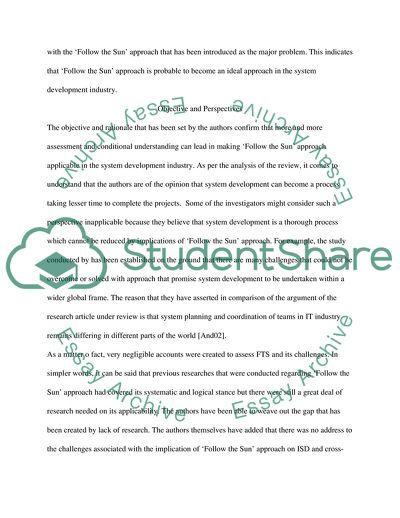Cite this document
(Follow the Sun Workow in Global System Development Written by Carmel, Article Example | Topics and Well Written Essays - 3000 words, n.d.)
Follow the Sun Workow in Global System Development Written by Carmel, Article Example | Topics and Well Written Essays - 3000 words. https://studentshare.org/information-technology/1817007-critical-review-of-a-journal-paper
Follow the Sun Workow in Global System Development Written by Carmel, Article Example | Topics and Well Written Essays - 3000 words. https://studentshare.org/information-technology/1817007-critical-review-of-a-journal-paper
(Follow the Sun Workow in Global System Development Written by Carmel, Article Example | Topics and Well Written Essays - 3000 Words)
Follow the Sun Workow in Global System Development Written by Carmel, Article Example | Topics and Well Written Essays - 3000 Words. https://studentshare.org/information-technology/1817007-critical-review-of-a-journal-paper.
Follow the Sun Workow in Global System Development Written by Carmel, Article Example | Topics and Well Written Essays - 3000 Words. https://studentshare.org/information-technology/1817007-critical-review-of-a-journal-paper.
“Follow the Sun Workow in Global System Development Written by Carmel, Article Example | Topics and Well Written Essays - 3000 Words”. https://studentshare.org/information-technology/1817007-critical-review-of-a-journal-paper.


